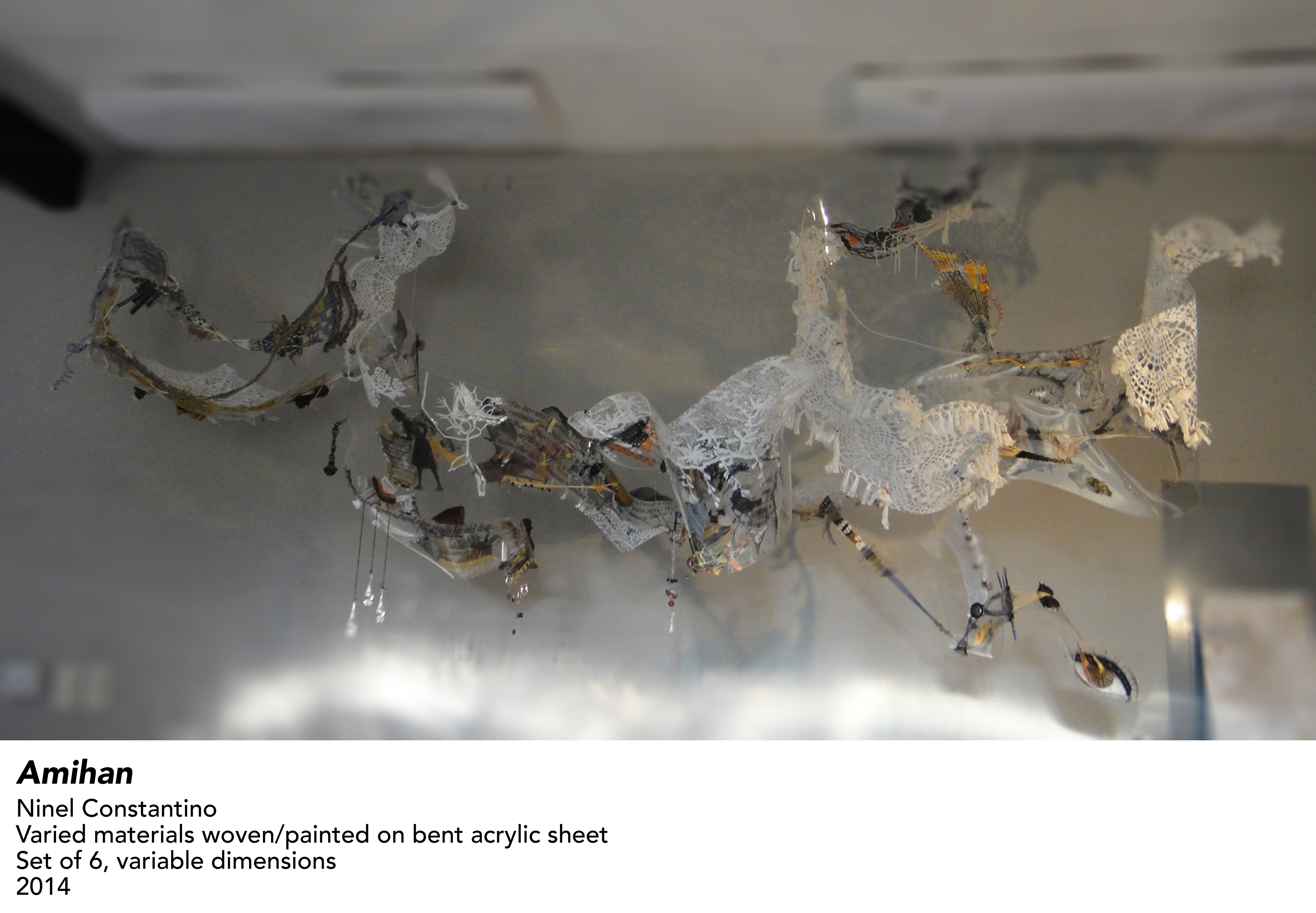 The UP Asian Center Museum, in partnership with the UP College of Fine Arts, will open two art exhibitions on Tuesday, 22 April 2014, at 5:00 PM, at the Hall of Wisdom, GT-Toyota Asian Cultural Center, Asian Center, University of the Philippines Diliman
The UP Asian Center Museum, in partnership with the UP College of Fine Arts, will open two art exhibitions on Tuesday, 22 April 2014, at 5:00 PM, at the Hall of Wisdom, GT-Toyota Asian Cultural Center, Asian Center, University of the Philippines Diliman
Lupa, Hangin, Tubig, at Apoy (Earth, Wind, Water, and Fire) at the China Hall celebrates Earth Day showcasing works of artists with different backgrounds, but who all decided to use discarded materials as part of their installation pieces. Opening on Earth Day itself, the four artists not only deal with discarded and found objects but also harks the traditional classification of the elements used in antiquity. Manix Abrera uses straws, plastic bags, cigarette butts, and driftwood to simulate a crime scene bemoaning the maltreatment of the environment in a stark and humorous way. Chong Ardivilla delves into the personal as he sets up three retablos as physical manifestations of his prayers. Ninel Constantino mines her life’s history as well as materials set aside in her home over the years, weaving them into an installation piece reminiscent of the wind. John Yan Yung manifests his experience growing up in a Chinese setting and its adjacent rituals through factory materials.
PHOTO (Top left): Ninel Constantino | Amihan (detail) - Hangin 2 | Varied materials woven/painted on bent acrylic, variable dimensions, 2014.
All these works come together to highlight how the consumer culture has rendered tons of waste materials. Curated by Professor Katti Sta. Ana, the participating artists reconfigure discarded materials and integrate their personal expressions in the process, thus casting a new light and life to objects that are usually cast aside and ignored.
 In Margin of Error at the Philippines Hall, Yan Abeledo articulates controlled entropy and experiments with the element of chance. Using programming as his tool, he plays with randomness and disorder to intimate genetic concepts such as heredity and mutation which ramify into his ideas of identity as a shifting, temporary construction. Jelai Averilla re-scales a house in Batasan Hills in a tracing paper that serves as a metaphor for seeing the inside from the outside. Layered further by the symbolisms of color and exaggerated lines, she presents how the household managed to expand their territory within the confines of a limited space. Jonathan Olazo's work offers a humorous and metaphorical take on space, exploring the interaction between a work and the space around it and its audience. Suggesting an architectural plan of a house, he draws in the gaze of the viewer with its improvised layouts of rooms and compartmentalized spaces, which seduces its audience by what is hidden. Jake Salvador’s deals with spirituality through his metaphysical childhood experience of the existence of the duendes. Appropriating the medical procedure called pangtatawas, he reveals the existence of the duende through candle dripping sculptures.
In Margin of Error at the Philippines Hall, Yan Abeledo articulates controlled entropy and experiments with the element of chance. Using programming as his tool, he plays with randomness and disorder to intimate genetic concepts such as heredity and mutation which ramify into his ideas of identity as a shifting, temporary construction. Jelai Averilla re-scales a house in Batasan Hills in a tracing paper that serves as a metaphor for seeing the inside from the outside. Layered further by the symbolisms of color and exaggerated lines, she presents how the household managed to expand their territory within the confines of a limited space. Jonathan Olazo's work offers a humorous and metaphorical take on space, exploring the interaction between a work and the space around it and its audience. Suggesting an architectural plan of a house, he draws in the gaze of the viewer with its improvised layouts of rooms and compartmentalized spaces, which seduces its audience by what is hidden. Jake Salvador’s deals with spirituality through his metaphysical childhood experience of the existence of the duendes. Appropriating the medical procedure called pangtatawas, he reveals the existence of the duende through candle dripping sculptures.
PHOTO (Right): Jake Salvador | Duende I (detail). Print on photo poster and repurposed wooden window frame
Curated by Professor Ling Quisumbing Ramilo, the exhibition emphasizes the different manifestations of space as expressed through contemporary three-dimensional art.The exhibits will run until 31 May. For more inquiries, please contact Mr. Ryan Reyes at 981.8500 local 3580 or via telefax at 920.3535.

